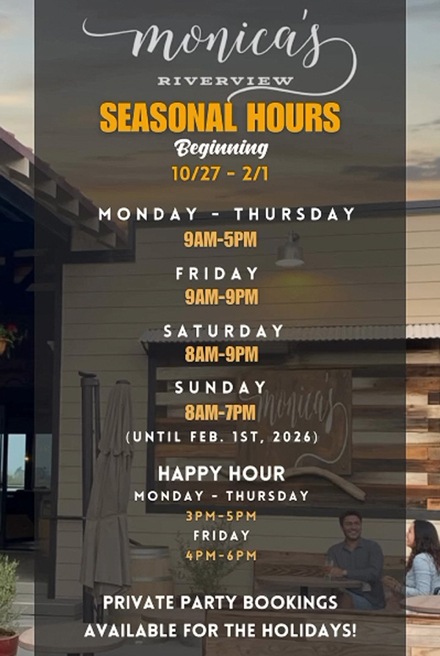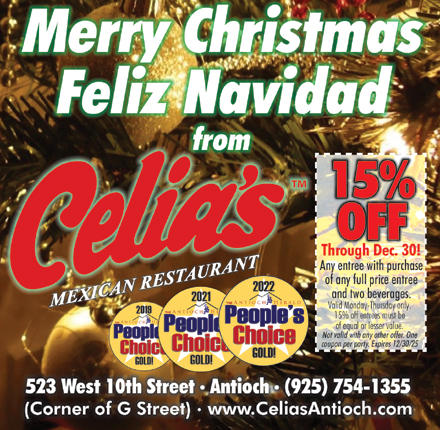6 years, 8 months for 28-year-old Marc Alexander Simon
Occurred in library restroom
By Ted Asregadoo, PIO, Office of the Contra Costa County District Attorney
Martinez, California – A Walnut Creek man was sentenced today in Contra Costa County Superior Court after entering guilty pleas to felony charges of sexual abuse of a minor and aggravated possession of child sexual abuse material.
28-year-old Marc Alexander Simon (born 12/25/96) was sentenced by the Honorable Charles Burch on June 26th, 2025, to six years and eight months in state prison. Simon was further ordered to register for life as a sex offender upon his release from custody.
The offenses for which Simon was sentenced occurred on April 11, 2024, when Simon followed a child into a restroom at the Walnut Creek Library and sexually abused the minor. The child reported the incident to an adult, who contacted the Walnut Creek Police Department.
Walnut Creek Police detectives used security cameras to quickly identify Simon’s vehicle as he left the scene. Police tracked him to another location in Walnut Creek, where he was arrested and booked into the Martinez Detention Facility. An iPhone seized during his arrest was forensically examined, revealing hundreds of images and videos of child sexual abuse material.
The transient man was arrested for lewd acts upon a child and attempted kidnapping. Simon has been in custody since his arrest and will begin to serve his sentence immediately. (See related article)
District Attorney Diana Becton said: “The swift investigative work by Walnut Creek Police and our Internet Crimes Against Children Task Force was crucial in holding the defendant accountable. This case demonstrates our unwavering commitment to protecting children in our communities from those who prey on them.”
Deputy District Attorney Ashley Torres from the Sexual Assault Unit prosecuted the case. The Walnut Creek Police Department Investigations Unit led the investigation with the assistance of the Contra Costa County Internet Crimes Against Children Task Force.
According to the Contra Costa County Sheriff’s Office, the five-feet, six-inch tall, 160-pound Simon is Hispanic and being held in the Martinez Detention Facility.
Case No. 01-24-01623 | The People of the State of California v. Simon, Marc Alexander
Allen D. Payton contributed to this report.
Read More
Screenshots of videos posted on social media of the incident in Discovery Bay on Sunday, June 22, 2025.
Erick & Danny Garcia were held on $95K bail each
Erick arrested in 2024, both arrested in May all on violence charges; Danny already out of custody
By Jimmy Lee, Director of Public Affairs, Office of the Contra Costa County Sheriff
The Contra Costa County Sheriff’s Office arrested two suspects after a reckless boating incident at Discovery Bay Marina on Sunday, June 22, 2025, that was widely shared on social media.
Deputy Sheriffs from the Marine Services Unit launched an investigation after multiple witnesses reported a Malibu ski boat chasing a personal watercraft (PWC) through the marina at high speeds. Deputies identified two operators during the incident, 33-year-old Erick Garcia and 34-year-old Danny Garcia, both from Oakley, who were seen operating the boat recklessly. The ski boat was later found abandoned in Stockton.
Erick Garcia was detained yesterday during a traffic stop in Oakley. With assistance from detectives in the Sheriff’s Office Investigations Division, Marine Patrol Deputies served a search warrant at Danny’s home in Oakley, leading to his arrest.
Both Danny and Erick Garcia were booked into the Martinez Detention Facility on identical charges:
- Assault with a Deadly Weapon (not a firearm) – 2 counts
- Criminal Threats – 1 count
- Vandalism – 2 counts
Each were being held in lieu of $95,000 bail. According to the Contra Costa Sheriff’s Office, Danny bonded out of custody today at 4:27 PM. However, as of Wednesday, June 25, at 4:42 PM, Erick was still in custody.
According to localcrimenews.com, Erick was arrested on May 3 this year by the Contra Costa County Sheriff’s Department for assault with any means of force likely to produce great bodily injury. He was also arrested on Sept. 5, 2024, by Contra Costa CHP for threats of violence. Danny was also arrested on May 3 this year, but by Walnut Creek Police, for being intoxicated in public and resisting a peace officer with injury.
See videos posted on social media here, here and here. (Warning: Explicit language)
The investigation remains ongoing. Anyone with additional information or video footage is encouraged to contact the Contra Costa County Sheriff’s Office Marine Services Unit at (925) 383-4906.
Allen D. Payton contributed to this report. In an earlier version of this report the photo of Danny Garcia was not the correct man from Oakley. Apologies for the mistake.
Read MoreEnjoy a family-friendly festival of fun with rides, games, food trucks, vendors and live music by The Floorshakers and Special Guest Myron Edwins, plus, DJ Magic Matt of Wild 94.9!
By City of Oakley
We are so excited that Oakley Summer Fest is THIS SATURDAY! We’ll have a kids’ area equipped with inflatable jumpers, a giant slide, trampoline bounce, and more! Be sure to bring $5 cash to purchase a wristband at this event at the Oakley Recreation Tent next to City Hall.
Oakley Summer Fest will be in Civic Center Plaza and on Main Street from Norcross to Vintage Parkway. This event is a daytime five-hour family-friendly festival. This event will have a wide range of activities for attendees – such as 40+ vendors, local food trucks, live music on stage, a giant kids’ zone equipped with rides and games & more!
Read MoreWalnut Creek, CA – Congressman Mark DeSaulnier (D, CA-10) announced today that he will host an in-person town hall on Monday, June 30th at 6:30 p.m. Topics to be covered include Mark’s views on the Trump Administration’s actions and our constitutional rights and the situation in the Middle East.
Town Hall
Monday, June 3o
6:30 – 7:30 p.m.
Antioch, CA
RSVP for Location
The event is RSVP only and capacity is limited. To reserve your spot or request special accommodations, visit https://desaulnier.house.gov/town-hall-rsvp or call (925) 933-2660.
This will be Congressman DeSaulnier’s 235th town hall and mobile district office hour since coming to Congress in January 2015.
Read More
A Brentwood Police Officer apprehends Kyle Simpkin in the Walnut Acres Mobile Home Park on Sunday night June 22, 2025. Brentwood PD dashcam video screenshot
All stolen items recovered; Kyle Robert Simpkin held on $20K bail
By Brentwood Police Department
Situations like this can be incredibly stressful for victims and having an officer who goes above and beyond to provide comfort and support can make all the difference.
On Sunday June 22, 2025, around 11PM, Brentwood officers were dispatched to Walnut Acres Mobile Home Park after a caller reported seeing a suspect inside a vehicle taking items. Upon arrival, officers discovered that the suspect had also entered two additional vehicles in the area.
A search of the surrounding area led officers to locate the suspect, identified as 34-year-old Kyle Robert Simpkin of Brentwood (born 12/21/90). Simpkin was found in possession of various stolen items and was placed under arrest. He was transported to the Martinez Detention Facility for booking on related charges. See video.
Fortunately, the stolen property was recovered and returned to its rightful owners.
According to the Contra Costa County Sheriff’s Department, the six-foot, three-inch tall, 200-pound Simpkin is Hispanic and being held in the West County Detention Facility on $20,000 bail. However, according to vinelink.com, he is listed as White.
According to localcrimenews.com, Simpkin was previously arrested in October 2021 by the Plumas County Sheriff’s Department for possession of a controlled substance, use or under the influence of a controlled substance and possession of drug paraphernalia.
Pictured above is Officer O’Malley escorting a victim as she retrieved her property following Sunday night’s incident. We want to take a moment to recognize the kindness, compassion and professionalism he displayed throughout the entire encounter.
Allen D. Payton contributed to this report.
Read More
Virtuous Voices Singers (left to right) Ivan Stewart, Lydia Stewart, Elise Culberson, Roma Desilva and Mya King perform at the Brentwood Juneteenth Festival June 19, 2025. Academy Founder, Tiffany Stewart with her students. Photos by Virtuous Voices
Antioch, CA – The City of Brentwood joyfully celebrated its Second Annual Juneteenth Festival this past Thursday with a powerful showcase of culture, unity, and artistic expression. Opening the event with a moving performance was Virtuous Voices Music Academy, whose singers delivered a heartfelt tribute to freedom through song.
As the first act of the day, Virtuous Voices set an inspiring tone for the festival, reminding attendees of the power of music to uplift, connect, and reflect on our shared history. Their performance underscored the importance of celebrating freedom – especially in today’s world where unity and expression remain essential.
The Virtuous Voices Singers performing at the event were Ivan Stewart, Lydia Stewart, Elise Culberson, Roma Desilva, and Mya King.
Virtuous Voices Music Academy, known for cultivating confidence and creativity through vocal performance and music theory, was honored to be part of this meaningful community event.
“We are so proud of our young singers,” said Tiffany Stewart, founder of Virtuous Voices Music Academy, a vocal coach and Music Theory Teacher. “To open a celebration as important as Juneteenth is a true honor. Our students sang not only with skill, but with heart.”
The Juneteenth Festival in Brentwood continues to grow as a cherished local tradition, commemorating the emancipation of enslaved African Americans and celebrating Black culture, resilience, and excellence.
For more information about Virtuous Voices Music Academy, visit www.virtuousvoices.com.
Read MoreBy Federal Bureau of Investigation

The unknown suspect wanted for assault on a federal officer in Concord, CA June 10, 2025. Photo: FBI
The Federal Bureau of Investigation’s San Francisco Field Office is seeking the public’s assistance in identifying the individual responsible for assaulting federal officers and the theft of government property on June 10, 2025, in Concord, California. The individual is described as a female who was wearing a black hoodie at the time. She is believed to be the individual who took the FBI Special Agent’s badge. The FBI offers a reward of up to $25,000.
Submit a Tip:
If you have any information concerning this case, please contact the FBI at 1-800-CALL-FBI (1-800-225-5324), your local FBI office, the nearest American Embassy or Consulate, or you can submit a tip online at tips.fbi.gov.
See video that depicts an unknown female wearing a black hoodie and black mask assaulting a federal officer in Concord, California, on June 10, 2025.
Read More
Dominic James Vannucci was arrested in Discovery Bay on June 4, 2025, for possession of child sexual abuse materials. Photo: CCCSheriff
25-year-old Dominic James Vannucci held on $1,200,000 bail
By Office of the Contra Costa County Sheriff
The Contra Costa County Internet Crimes Against Children (ICAC) task force recently received information that a Contra Costa County resident was in possession of child sexual abuse material. ICAC investigators identified the person and secured a search warrant for his residence.
On Wednesday morning, June 4, 2025, the ICAC task force executed a search warrant at a home on the 2200 block of Breaker Court in Discovery Bay.
Electronic devices containing child pornography, along with other items, were seized.
Detectives arrested 25-year-old Dominic James Vannucci of Discovery Bay (born 2/9/2000). He was booked into the Martinez Detention Facility, where he is currently being held. On Wednesday afternoon, June 4, the Contra Costa District Attorney’s Office filed 20 counts against Vannucci, including possession of child pornography and annoying or molesting a child. He is being held in lieu of $1,200,000 bail.
Vannucci works as a Teacher’s Aide at Excelsior Middle School in Byron. Detectives have notified school officials and are coordinating with the administration regarding the investigation.
The investigation is ongoing. Anyone with any information regarding this case or who has had contact with Vannucci related to this investigation is asked to call the Contra Costa Sheriff’s Office Investigation Division at (925) 313-2600. For any tips, please email: tips@so.cccounty.us or call 866-846-3592 to leave an anonymous voice message.
According to the Contra Costa County Sheriff’s Department, the six-feet, two-inch tall, 180-pound Vannucci is Hispanic and his next court appearance is scheduled for June 26, 2025, in Dep’t 5 of Superior Court in Martinez.
Contra Costa County ICAC consists of Brentwood PD, Concord PD, Moraga PD, Oakley PD, Pleasant Hill PD, Walnut Creek PD, Contra Costa Sheriff’s Office, Contra Costa Probation Department, Contra Costa District Attorney’s Office, U.S. Secret Service, and Homeland
Security Investigations.
Allen D. Payton contributed to this report.
Read More
Terri Lowtrice James of Richmond held on $1 million bail
By Jimmy Lee, Director of Public Affairs, Office of the Contra Costa County Sheriff
 At about 10:02 Wednesday morning, June 11, 2025, Bay Station Deputy Sheriffs were dispatched to a ‘medical-police’ call near Market Avenue and 6th Street in North Richmond. The caller reported that there was a person on the sidewalk who was bleeding.
At about 10:02 Wednesday morning, June 11, 2025, Bay Station Deputy Sheriffs were dispatched to a ‘medical-police’ call near Market Avenue and 6th Street in North Richmond. The caller reported that there was a person on the sidewalk who was bleeding.
Deputies located the person and provided first aid and CPR. The fire department arrived shortly after to continue life-saving measures. The person was later pronounced deceased at the scene. The person is not being identified at this time.
During the initial investigation, deputies identified a suspect who was later taken into custody by Sheriff’s Office detectives. The suspect was later booked into the Martinez Detention Facility for murder. She is identified as 61-year-old Terri Lowtrice James of Richmond (born 7/7/1963). She is being held in lieu of $1 million bail.
According to localcrimenews.com, she is Black and has a history of arrests dating back to 2019 by Richmond PD and the Contra Costa Sheriff’s Department for crimes including inflicting corporal injury on spouse or cohabitant, vandalism using paint, possession of controlled substance, robbery, and possession of drug paraphernalia.
According to the Contra Costa Sheriff’s Department, the five-foot, four-inch tall, 165-pound James has her next court appearance on July 1, 2025, in Department 5 of Superior Court in Martinez.
The investigation is ongoing. Anyone with any information on this incident is asked to contact the Investigation Division at (925) 313-2600. For any tips, email: tips@so.cccounty.us or call (866) 846-3592 to leave an anonymous voice message.
Allen D. Payton contributed to this report.
Read More
The Contra Costa Water District Canal Replacement Project includes 20 miles of the waterway. Photo: CCWD
Lake Shasta is source of all water, Los Vaqueros Reservoir will not be expanded, CoCoTax members learn
By Allen D. Payton
During the Contra Costa Taxpayers Association Members and Leaders monthly luncheon in May, Contra Costa Water District Board President, Ernesto Avila provided an update on the district’s current work and plans. They include repairing 20 of the 48-mile canal at a cost of $1 billion, keeping water rates as low as possible and expanding service to keep up with growth.
The district includes the Central County cities and communities of Martinez, Pleasant Hill, Concord, Clayton, Pacheco, Clyde, Port Costa and portions of Walnut Creek, and in East County, the cities and communities of Pittsburg, Antioch, Oakley, Bay Point, and portions of Brentwood.

CCWD Board President Ernesto Avila provides an update during the CoCo Taxpayers Association luncheon on May 23, 2025. Photo: Allen D. Payton
Half of the district’s water is provided to treated water customers and the other half to raw water customers, Avila stated and then spoke about ensuring adequate “water supply during disasters such as fire and earthquake emergencies.”
“When PG&E outages occur all of our tanks go full,” he shared. “Water only stays sweet for six to seven days to meet the water quality requirements of the state.”
“Lake Shasta is where we get all of our water from through the Central Valley Project,” he continued. “It’s currently 94% full.”
The district owns Los Vaqueros Reservoir for storage, which is currently 93% full. But “we can’t just draw water whenever we want,” Avila stated. “All of our intakes are screened to protect fish.”
“We are out of our drought,” Avila added. However, “during the drought there were no constraints on water supply for development and growth.”
Canal Replacement Program
There have been “landslides on the west side of the canal and repairs can cost millions,” he stated and spoke of the district’s “Canal Replacement Program” which will cost “$1 billion”.
“Nobody likes to raise rates,” Avila continued. “We’ve replaced four miles, so far and have 16 miles to go. It will be a pipeline”
Asked what happens to the pipe during an earthquake he said, “If it’s an older pipe, it will probably crack. We’re looking at a very ductile pipe that can move easily.”
Asked if there will be solar panels over the canl
Click here to learn more about the Contra Costa Canal.
Water Supply
Avila then spoke about providing enough water to meet the demands of residential growth including “redevelopment of the Concord Naval Weapons station” where “15,000 homes” are projected to be built.
“Ten percent of the district’s water is provided through recycling,” he stated. “We want to bump that up to fifteen percent.”
Budget & Water Costs to Users
“Energy costs have been the greatest increases from 2020 to 2024, medical coverage is second greatest,” he shared. Those are followed by “pension and OPEB (other post employee benefit) liabilities.”
“The average customer spends about $3.00 per day for water,” Avila stated. “The cost is 1.3 cents per gallon per day.”
He compared that to EBMUD rates which are at 2.0 cents per gallon.
According to the slide show from his presentation, costs to the district for water production include the following:
INVESTMENTS IN INFRASTRUCTURE – Pipeline Renewal, Canal Replacement, Water Treatment Plant Upgrades;
PURCHASED WATER
WATER SUPPLY AND RESOURCE PROTECTION – Water Supply Planning, Watershed Management, Recreation;
SYSTEM OPERATIONS & MAINTENANCE – Water Treatment, Water Delivery, Leak Inspection and Repair;
ADMINISTRATION – Human Resources, Safety, Accounting and Payroll;
CUSTOMER CARE – Customer Service, Billing, Water Efficiency Support, and Public Affairs; and
COMMUNITY EDUCATION AND WORKFORCE DEVELOPMENT K-12 Water Education and Field Trips, and Internships.
The district as an AAA Bond Rating which keeps interest costs on bonds down, Avila shared.
He was then asked about “money going to DEI programs. I this something you should be doing anymore?” Avila responded, “there are three employees dedicated to it. There are 317 employees which is 30-40% of the budget We have one person in Human Resources dedicated to it. We have a $200 million per year budget. Not even one percent is dedicated to it.”
“It’s about trying to enhance the culture for our employees to work together better,” he added. “We review it every six months. Our Master Plan is on the website.”
Asked about “EPA clean water requirements getting tougher each year” Avila spoke about “unfunded mandates we have to comply with. We work with various associations and collaborate on a national level as regulations are mostly at the federal level.”
“Our biggest concern is the issue of diminishing return on conservation,” he explained. “During the drought, people in our area reduced use by 25 percent while Southern California only reduced 2-3 percent.”
According to the chart in Avila’s presentation total water use has actually decreased over the past 17 years even though the population has significantly increased.
No Los Vaqueros Capacity Increase Due to Too Much Cost and Regulation, Offline for Too Long
Asked about increasing capacity at Los Vaqueros, Avila said, “The district spent $10 million on raising the…reservoir, for a cost/benefit analysis funded by the state. It was over subscribed with more customer demand than supply, 250,000 versus 120,000 acre feet.”
“But with so many constraints on pumping water into the reservoir, demand dropped to 50,000 acre feet then to zero,” he continued. “The cost increase with inflation went from $800 million to $1.6 billion, mainly from more material and labor cost increases, plus, engineering costs.”
Finally, Avila shared, “Los Vaqueros Reservoir would have had to be offline for six to seven years. It just wasn’t viable. They knew that, going in. The issue was negotiating supply from EBMUD and others” who “couldn’t guarantee any water.”
He also spoke about future supply including the proposed offstream Sites Reservoir project west of Colusa in the Sacramento Valley.
“In California, for every one million acre-feet of storage, there is eight to nine acre-feet of surface storage,” Avila stated.
Finally, in response to a question, he said, “Water from a canal behind a house is not grandfathered in if the home is sold.”
See Avila’s complete CCWD CocoTax Presentation 052325.
CoCoTax June Luncheon
The next CoCoTax Members and Board Luncheon will be held on Friday June 27, 2025, at 11:45 AM at Denny’s Restaurant, 1313 Willow Pass Road in Concord, and will feature Oakland Mayor recall leader Seneca Scott as the speaker. Advance registration is available on the CoCoTax website where you can pay online, or bring cash or check on Friday and pay at the door: $25 for members, $30 for guests. www.cocotax.org/event-6189658/Registration
About CoCoTax
Founded in 1937, CoCoTax leads the way in providing fiscal oversight of local government. We actively resist unwarranted taxes and fees, discriminatory regulations, ill-advised public expenditures and government secrecy, inefficiency and waste. For more information and membership visit www.cocotax.org.
About CCWD
The Contra Costa Water District delivers safe, clean water to approximately 520,000 people in central and eastern Contra Costa County in Northern California. Formed in 1936 to provide water for irrigation and industry, we are now one of the largest urban water districts in California and a leader in drinking-water treatment technology and source water protection. For more information visit www.ccwater.com.
Read More























